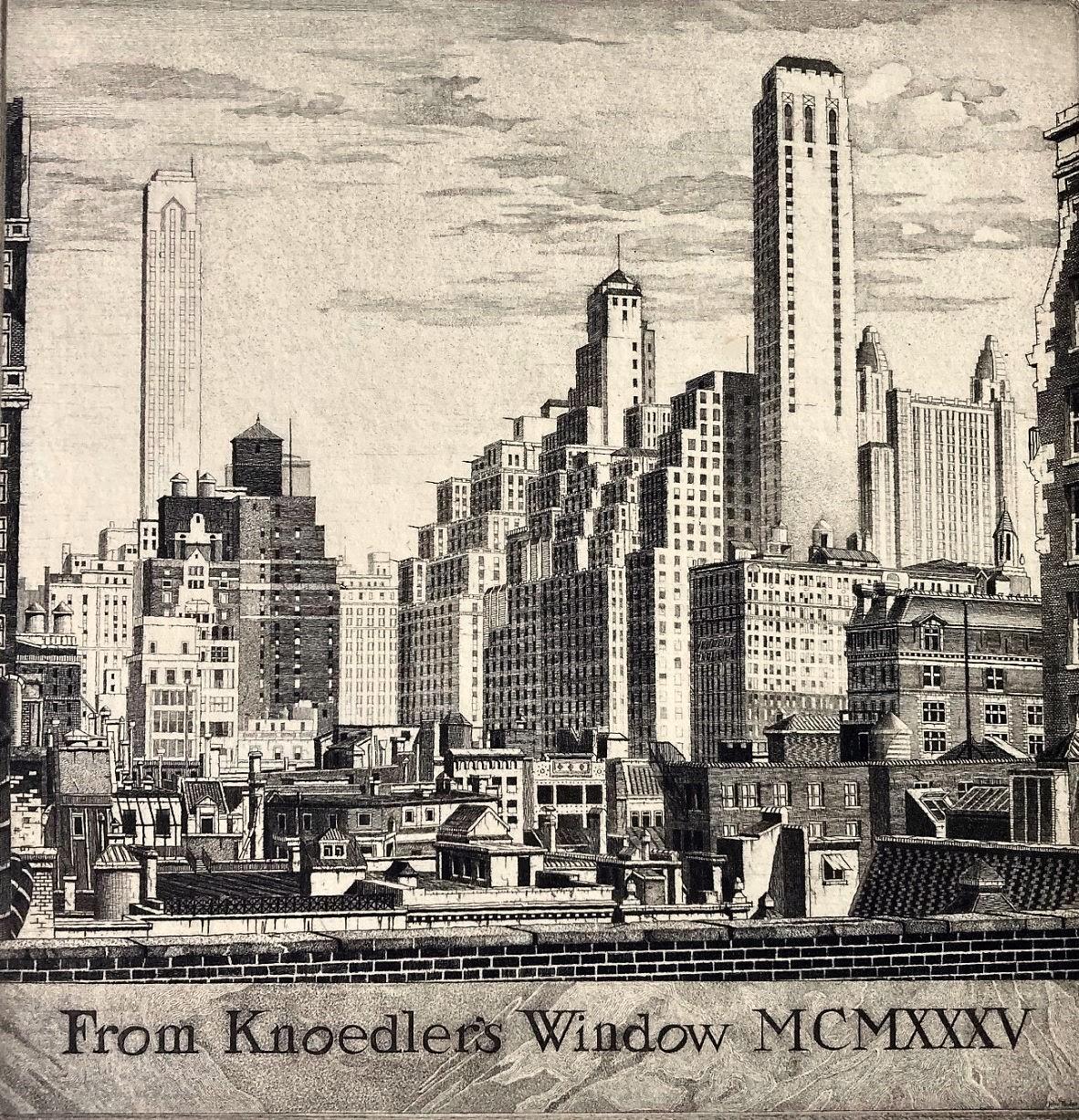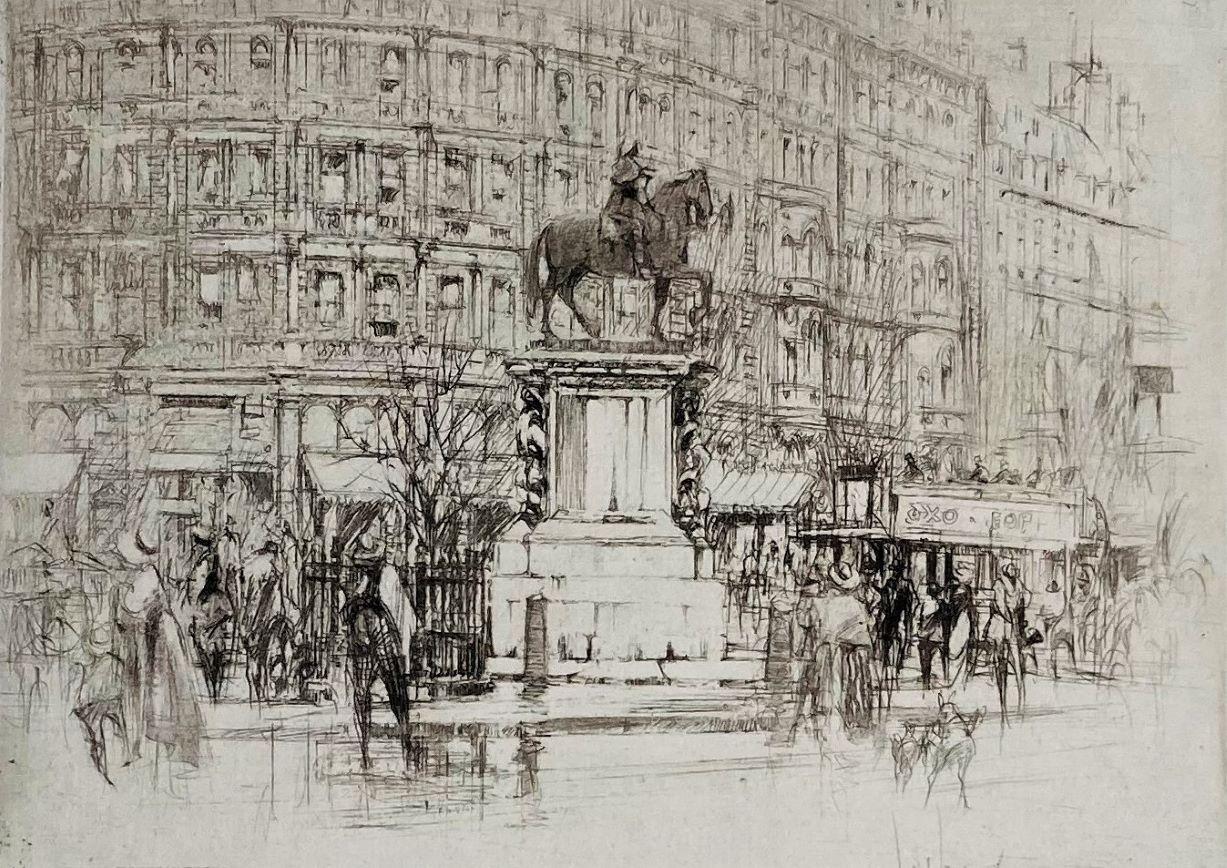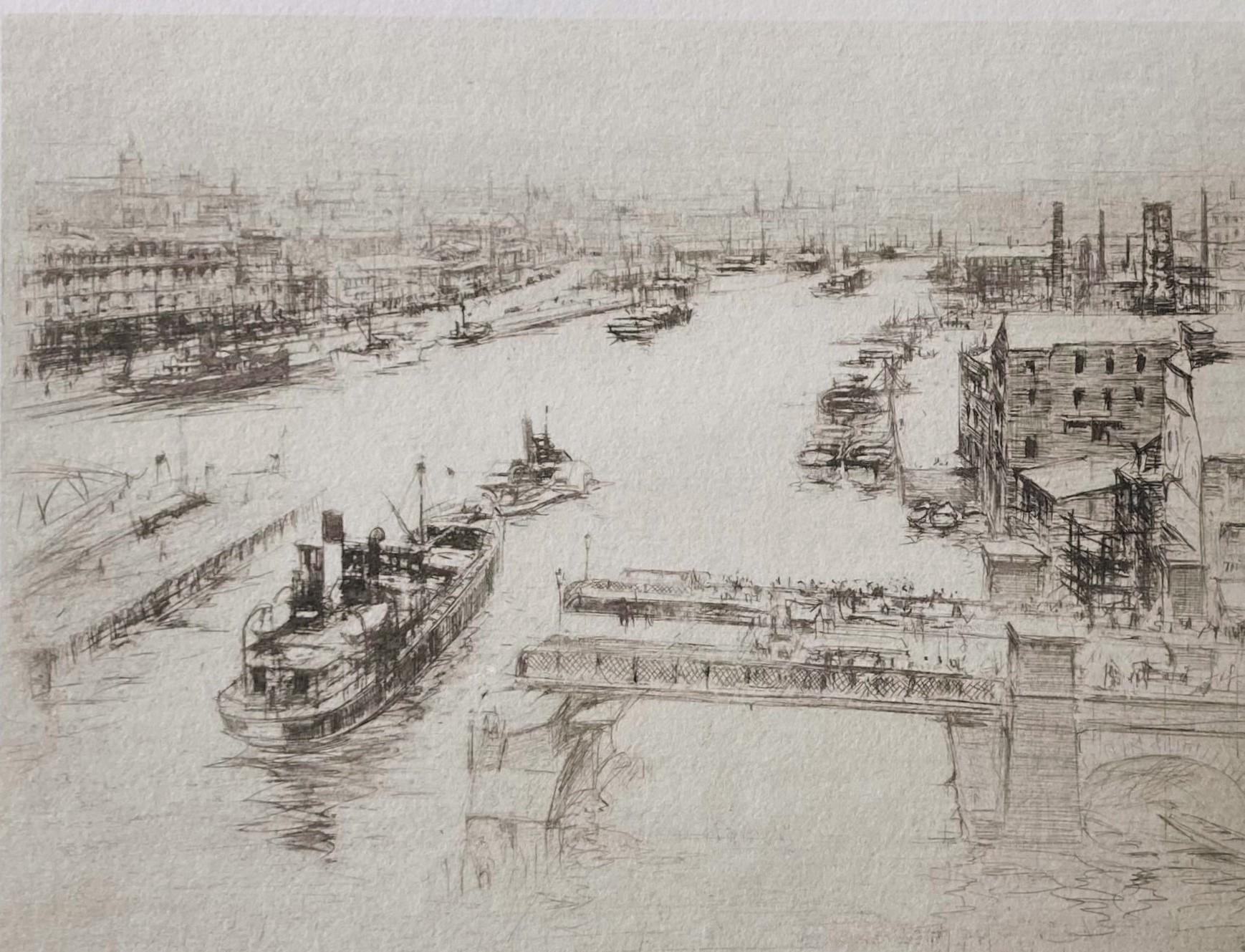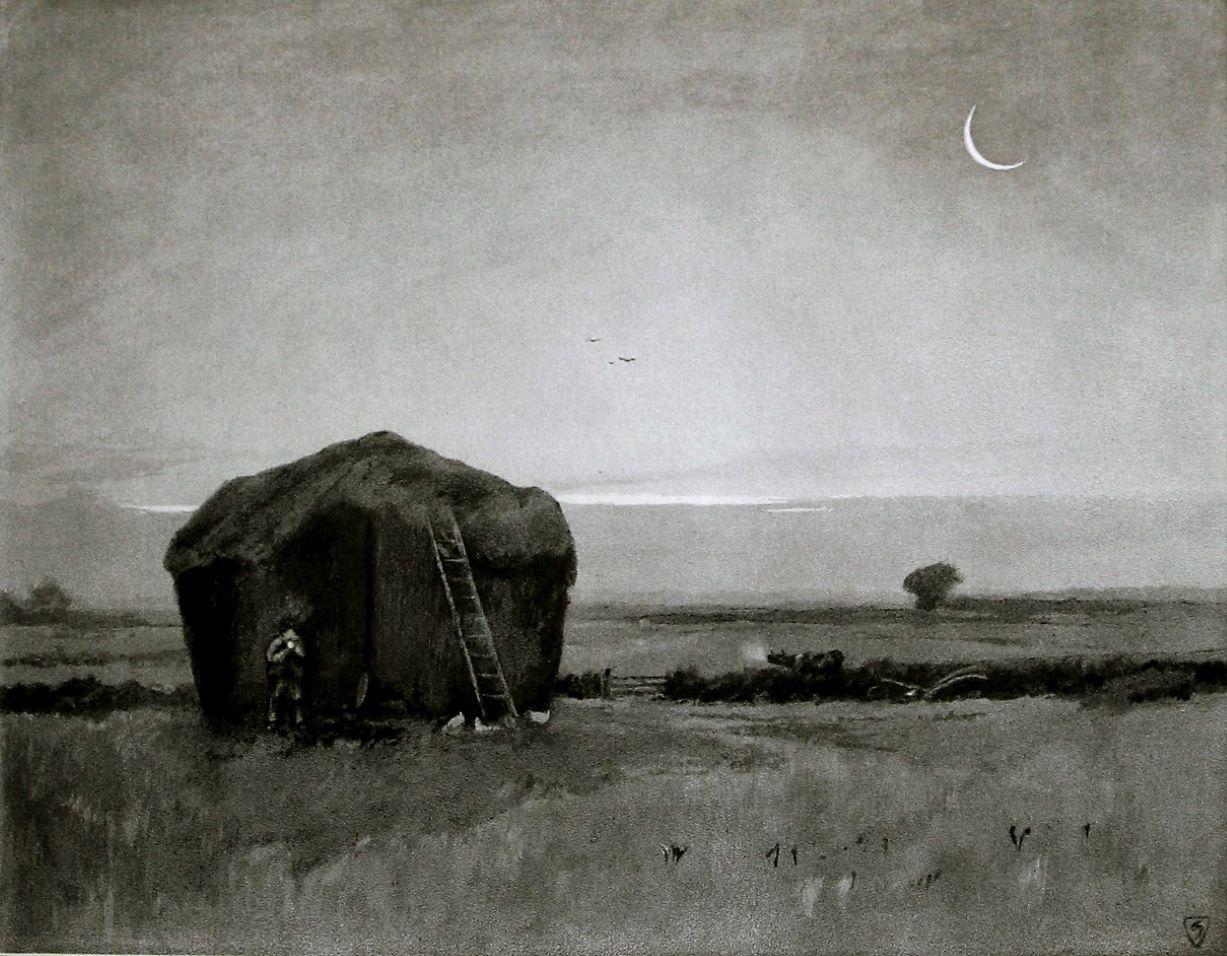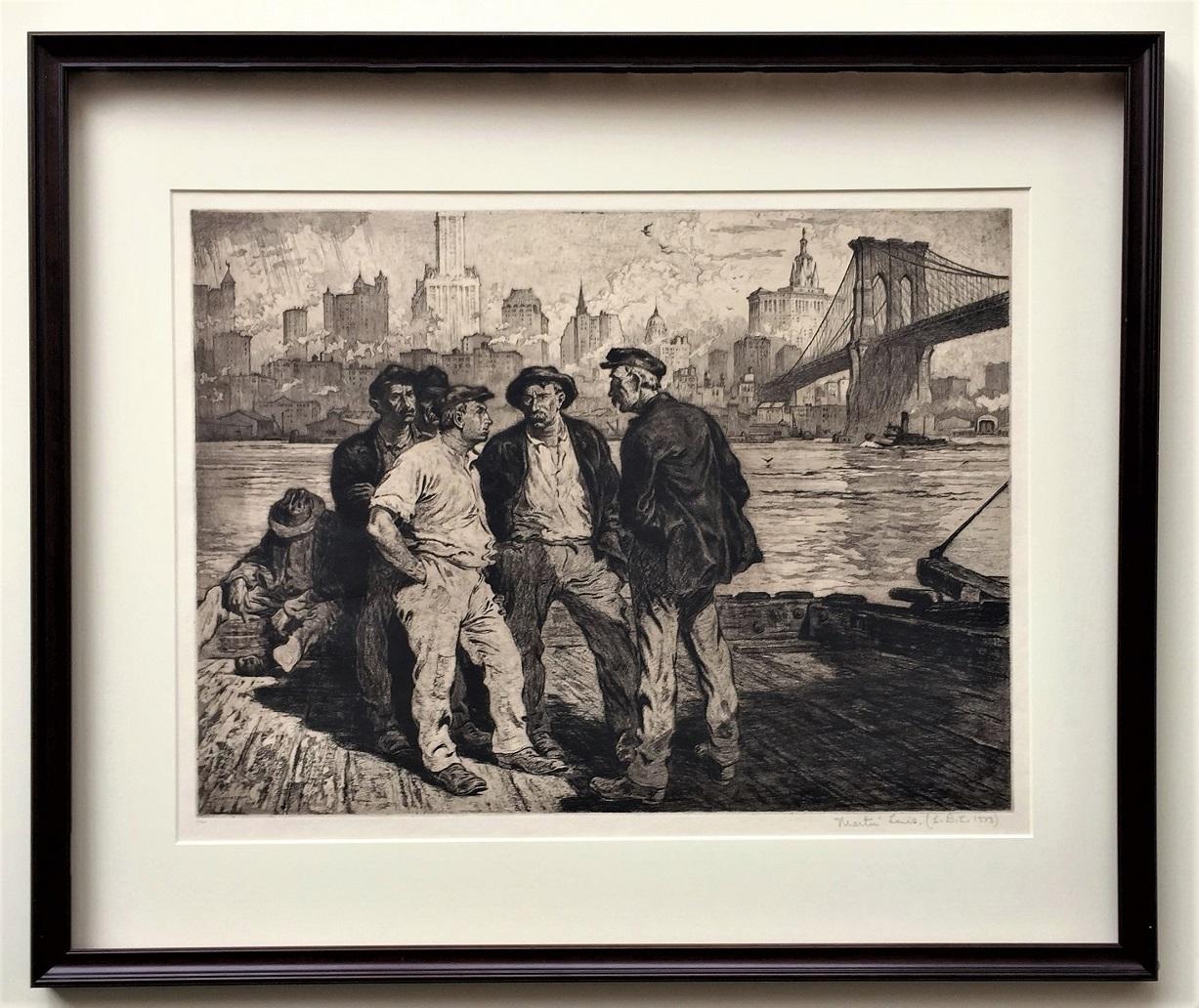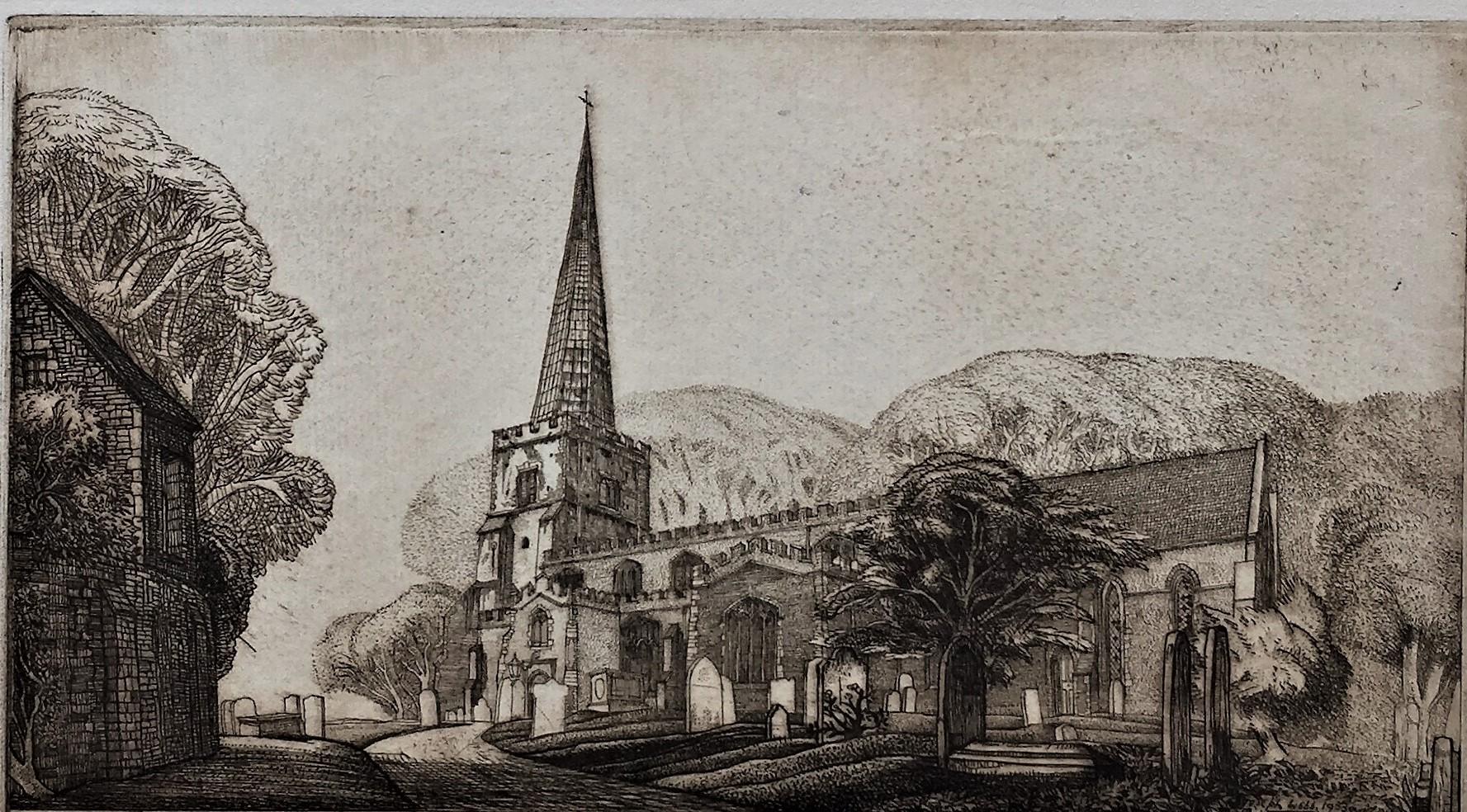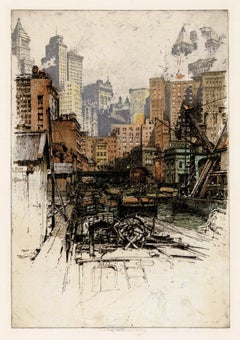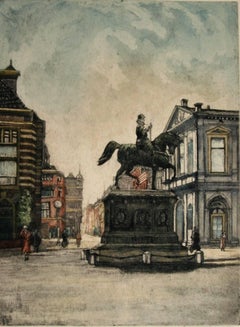
Nooreinde den Haag (North End of The Hague).
View Similar Items
Want more images or videos?
Request additional images or videos from the seller
1 of 6
John FeherstNooreinde den Haag (North End of The Hague). C. 1920
C. 1920
About the Item
- Creator:John Feherst
- Creation Year:C. 1920
- Dimensions:Height: 16.38 in (41.61 cm)Width: 12.25 in (31.12 cm)
- Medium:
- Movement & Style:
- Period:
- Condition:
- Gallery Location:Storrs, CT
- Reference Number:1stDibs: LU33522444491
About the Seller
5.0
Recognized Seller
These prestigious sellers are industry leaders and represent the highest echelon for item quality and design.
Platinum Seller
These expertly vetted sellers are 1stDibs' most experienced sellers and are rated highest by our customers.
Established in 1977
1stDibs seller since 2016
699 sales on 1stDibs
Typical response time: 1 hour
Associations
International Fine Print Dealers Association
More From This SellerView All
- From Knoedler's Window MCMXXXVBy John Taylor ArmsLocated in Storrs, CTFrom Knoedler's Window MCMXXV. 1935. Etching and Aquatint. Fletcher catalog 293 stateiv/v. Image: 5 1/16 x 4 15/16 (sheet 12/7/8 x 9 1/8). Edition 271 in this state (total edition 3...Category
1920s American Modern Landscape Prints
MaterialsAquatint, Etching
$800 Sale Price20% Off - Charing Cross - The Statue of Charles I.By William Walcot R. E. Hon. R. I. B. A.Located in Storrs, CTCharing Cross -- The Statue of Charles I. 1919. Etching with aquatint and drypoint. 3 5/8 x 4 7/8 (sheet 9 1/8 x 11 3/8). A fine proof with tonal wiping, printed on cream-wove paper. Signed in pencil. Charing Cross is located at the junction of the Strand, Whitehall, and Cockspur Street in Central London, England. The name originates from the Eleanor cross installed by King Edward I as a memorial to his wife, Eleanor of Castile at the former hamlet of Charing. Since 1675, the cross site has been occupied by a statue of King Charles I mounted on a horse. The pedestal is thought to be designed by Wren and carved by Grinling Gibbons. Chelsea Old Church, also known as All Saints, is an Anglican church, on Old Church Street, Chelsea, London SW3, England, near Albert Bridge. It is the church for a parish in the Diocese of London, part of the Church of England. Inside the Grade I listed building, there is seating for 400 people. There is a memorial plaque to the author Henry James (1843–1916) who lived nearby on Cheyne Walk. To the west of the church is a small public garden containing a sculpture by Sir Jacob Epstein. When he was seventeen,William Walcot began to study architecture under Louis Benois at the Imperial Academy of Art in Saint Petersburg. He went to Paris where he continued his studies at the Ecole des Beaux-Arts and the Atelier Redon. He practiced as an architect briefly in Moscow, designing the Hotel...Category
Early 20th Century Modern Landscape Prints
MaterialsDrypoint, Etching, Aquatint
$780 Sale Price20% Off - Loading Barges on the ThamesBy William Walcot R. E. Hon. R. I. B. A.Located in Storrs, CTLoading Barges on the Thames. 1922. Etching with drypoint and aquatint. Dickins 72. 4 5/8 x 13 1/8 (sheet 9 3/8 x 15 1/2). Series: The Arteries of Great Britain. Edition 425. A fine proof with tonal wiping, printed on 'J. Whatman' wove paper. Signed in pencil. The complete set of The Arteries of Great Britain includes The Thames, The Tyne, The Forth, The Clyde, and The Mersey. Architectural draughtsman, etcher. Born in Lustdorf, near Odessa, Russia, to a British father and Russian mother. Traveled extensively with his family before studying architecture in St Petersburg, with further studies at Ecole des Beaux-Arts and Atelier Redan, Paris. Practiced architecture in Moscow and was co-designer of the Metropole Hotel, in 1898. Moved to London in 1907 and was employed as an architectural perspectivist. After a sponsored visit to Rome and Venice he had a solo exhibit at the Fine Art Society, 1912, 'Watercolours of London and Venice'; followed by a further four shows. He also exhibited at the Royal Academy, Royal Society of British Artists, Royal Society of Painter-Etchers..., and Connell & Sons. His etchings were published in London by H C Dickens,1913-24, and a folio of his work 'Architectural watercolors and etchings of William Walcot' was published, in 1919. Elected RE, 1920; FRIBA, 1922; Associate British School at Rome. A foremost architectural draughtsman, he worked from studios in London, Oxford, and Rome. The complete set of The Arteries of Great Britain includes: The Thames, The Tyne, The Forth, The Clyde, The Mersey. Signed in pencil .Housed in a 16 x 20 inch mat suitable for framing. Opened in 1890, the Forth Bridge...Category
Early 20th Century Modern Landscape Prints
MaterialsDrypoint, Etching, Aquatint
$480 Sale Price20% Off - The First Wooden Temple of JupiterBy William Walcot R. E. Hon. R. I. B. A.Located in Storrs, CTThe First Wooden Temple of Jupiter or Restoration of one of the first Temples of Jupiter Capitolinus, Rome.Dickins 47. 5 1/8 x 7 1/8 (sheet 9 3/16 x 11 5...Category
Early 20th Century Modern Landscape Prints
MaterialsDrypoint, Etching, Aquatint
$400 Sale Price20% Off - The TyneBy William Walcot R. E. Hon. R. I. B. A.Located in Storrs, CTThe Tyne. 1922. Etching and drypoint. Dickins 73. 5 7/8 x 7 7/8 (sheet 9 3/4 x 12 1/2). Series: The Arteries of Great Britain. Edition 425. A fine proof with tonal wiping and more of a sepia coloring, printed on "J.Green & Son' cream-wove paper. Signed in pencil. The image looks down on the open Swing Bridge, from the High-Level Bridge, Newcastle upon Tyne. The boats carry timber and coal. The complete set of The Arteries of Great Britain includes The Thames, The Tyne, The Forth, The Clyde, and The Mersey. Architectural draughtsman, etcher. Born in Lustdorf, near Odessa, Russia, to a British father and Russian mother. Traveled extensively with his family before studying architecture in St Petersburg, with further studies at Ecole des Beaux-Arts and Atelier Redan, Paris. Practiced architecture in Moscow and was co-designer of the Metropole Hotel, in 1898. Moved to London in 1907 and was employed as an architectural perspectivist. After a sponsored visit to Rome and Venice he had a solo exhibit at the Fine Art Society, 1912, 'Watercolours of London and Venice'; followed by a further four shows. He also exhibited at the Royal Academy, Royal Society of British Artists, Royal Society of Painter-Etchers..., and Connell & Sons. His etchings were published in London by H C Dickens,1913-24, and a folio of his work 'Architectural watercolors and etchings of William Walcot' was published, in 1919. Elected RE, 1920; FRIBA, 1922; Associate British School at Rome. A foremost architectural draughtsman, he worked from studios in London, Oxford and Rome. The complete set of The Arteries of Great Britain includes: The Thames, The Tyne, The Forth, The Clyde, The Mersey. Signed in pencil .Housed in a 16 x 20 inch mat suitable for framing. Opened in 1890, the Forth Bridge...Category
Early 20th Century Modern Landscape Prints
MaterialsDrypoint, Etching, Aquatint
$400 Sale Price33% Off - September 13, 1918. St. Mihiel [The Great Black Cloud].By Kerr EbyLocated in Storrs, CTSeptember 13, 1918. St. Mihiel [The Great Black Cloud]. 1934. Etching, aquatint and sandpaper ground. Giardina catalog 182 state iv. 10 3/8 x 16 (sheet 13 1/8 x 18 1/4). Edition 100. Illustrated: Prints vol. VI, no. 2, 1935, page 85; Print Collector's Quarterly 26 (1939): 82; Fine Prints of the Year, 1935; Eby. War. Provenance: Frederick Keppel & Co. A rich, beautifully wiped impression on cream-colored wove paper. Signed and annotated 'imp' and 'Edition 100' in pencil, indicating a proof printed by the artist. This is Eby's most famous etching...Category
Early 20th Century American Modern Landscape Prints
MaterialsMixed Media, Etching, Aquatint
$12,000 Sale Price31% Off
You May Also Like
- Boathouse along the Tisza River; TiszlapartLocated in Middletown, NYEtching with aquatint on buff wove paper, 11 3/8 x 15 1/2 inches (287 x 392 mm), full margins. Signed, titled, and numbered 99/100 in pencil, lower margin. In good condition with som...Category
Early 20th Century Modern Landscape Prints
MaterialsHandmade Paper, Aquatint, Etching
- 'Coenties Slip' — 1920s Lower Manhattan, Financial DistrictBy Luigi KasimirLocated in Myrtle Beach, SCLuigi Kasimir, 'Coenties Slip', color etching with aquatint, 1927, edition 100. Signed in pencil. Dated in the plate, lower right. Annotated 'NEW YORK HANOVER SQUARE (COENTIES SLIP)'...Category
1920s American Modern Landscape Prints
MaterialsEtching, Aquatint
- Rapunzel, Rapunzel let down your Hair (Six Fairy Tales from the Brothers Grimm)By David HockneyLocated in New York, NYSheet from “Rapunzel” story (from Six Fairy Tales from the Brothers Grimm) Text printed letterpress and “Rapunzel, Rapunzel let down your Hair” etching and aquatint on W S Hodgkinson paper watermarked "DH" and "PP" Etching 10.5 × 9.85 in. / 26.7 × 25 cm Paper 17.5 x 12.25 in. / 45 x 31 cm Unsigned: apart from the published edition of 400 books and 100 portfolios. This is one of eleven images recently found in our archive which we have decided to make available. There is one only of each image. Perhaps the most famous story from the Grimm Brothers, Rapunzel spins the tale of a beautiful young princess locked away by an evil sorceress. Captured in this scene is the moment a King's son came across the tower and fell in love with her sweet singing, beseeching her: 'Rapunzel, Rapunzel, Let down your hair to me.' Though the sorcerer banishes Rapunzel and maims the prince, they are of course ultimately reunited to live happily together. Hockney illustrates this scene with incredible texture detail: layers of aquatint defining the soft forest floor, delicate hatching on the horse's haunch, the tower's tight crosshatching, and of course the lyrical gesture of Rapunzel's hair which cascades from the upper right corner. This print from our publisher's archives is one of thirty-nine etchings from David Hockney’s 1969 "Six Fairy Tales from the Brothers Grimm". Hockney worked on this series with Paul Cornwall-Jones at Petersburg Press over the course of a year. 400 books and 100 portfolios plus artist’s proofs were printed. The artist illustrated six stories: 'The Little Sea Hare', 'Fundevogel', 'Rapunzel', 'The Boy who left Home to learn Fear', 'Old Rinkrank' and 'Rumpelstilzchen'. According to Hockney, "They're fascinating, the little stories, told in a very, very simple, direct, straightforward language and style, it was this simplicity that attracted me. They cover quite a strange range of experience, from the magical to the moral." He was inspired by earlier illustrators of the tales, including Arthur Rackham and Edmund Dulac, but Hockney reimagined the stories for a modern audience. The frontispiece for the project pictures Catherina Dorothea Viehmann, the elderly German woman who recounted fairy tales to the Grimm brothers when they were in their late twenties. In Hockney's words: “The stories weren’t written by the Brothers Grimm…they came across this woman called Catherina Dorothea Viehmann, who told 20 stories to them in this simple language, and they were so moved by them that they wrote them down word for word as she spoke.” Hockney drew the German woman in the style of Dürer, formally posed yet naturalistic against an impeccably crosshatched swath of grey. Hockney wrote about the surreal plots contained in the Brothers Grimm tales: “…the stories really are quite mad, when you think of it, and quite strange. In modern times, it’s like the story of a couple moving into a house, and in the next door’s garden they see this lettuce growing: and the wife develops this craving for the lettuce that she just must have and climbs over to pinch it, and the old woman who lives in the house next door says well, you can have the lettuce if you give me your child, and they agree to it. And if you put it into terms like this and imagine them in their semi-detached house agreeing to it all, it seems incredible.” Hockney enhanced this unbelievable quality with his illustrations which traverse inky, dense areas of intense crosshatching and minimalist line work. Rather than serving as direct interpretations of the plot, the images capture moments and feelings. Some portray the magic yet mundane -- Rapunzel's tiny face gazing placidly at a well-tended garden, or project danger and unease as in The Haunted Castle, with its citadel perched atop craggy rocks, dramatically lit against a dark sky. Hockney's sense of humor comes through in Cold Water About to Hit the Prince, in which a man tucked into bed stares straight at a rush of water drawn with a splash (this technique is likely Spit Bite, and the resultant bold spattered brushstroke contrasts beautifully with the rest of the carefully crosshatched image). A Wooded Landscape, with its lush textures, conveys the bucolic setting of a fairy tale and the potential danger hidden within the woods -- the viewer is left to wonder who lives on the hilltop in that diminutive cabin. These etchings defy the conventions of beautiful fairy tale illustrations...Category
1960s Modern Landscape Prints
MaterialsEtching, Aquatint
- Catherina Dorothea Viehman (Six Fairy Tales from the Brothers Grimm) HockneyBy David HockneyLocated in New York, NYCatherina Dorothea Viehman (from Six Fairy Tales from the Brothers Grimm) Etching and aquatint on W S Hodgkinson paper watermarked "DH" and "PP" Paper 1...Category
1960s Modern Figurative Prints
MaterialsAquatint, Etching
- Shadows of VeniceBy John Taylor ArmsLocated in Middletown, NYEtching and aquatint on antique laid paper, wide margins. Signed, dated and inscribed "Edition of 100" in pencil, lower margin. Second state (of 2)....Category
Mid-20th Century American Modern Landscape Prints
MaterialsAquatint, Laid Paper, Etching
- The Hospital, Santa Cruz, ToledoBy Samuel ChamberlainLocated in Middletown, NYEtching with aquatint printed in brownish black ink on watermarked BFK Rives cream wove paper, 9 1/2 x 7 11/16 inches (240 x 193 mm), full margins. Signed in pencil and numbered 79/...Category
Mid-20th Century American Modern Landscape Prints
MaterialsHandmade Paper, Etching, Aquatint


